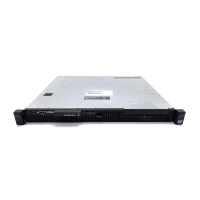Configuration Replace and Rollback | 301
12“
Configuration Replace and Rollback
Configuration Replace and Rollback is supported on platforms c e
The E-Series ExaScale platform is supported with FTOS 8.1.1.0 and later.
Configuration Replace and Rollback enables you to replace the current running-configuration with
different configuration without restarting the chassis.
Without this feature, if you want to load a new running configuration, you must copy the desired
configuration file to the startup-configuration (using the command
copy file startup-configuration) and
reboot the chassis (using the command
reload). Copying the desired configuration file to the
running-configuration file (using the command
copy file running-configuration) merely appends the running
configuration; any conflicts between the two files is reported to the console, but FTOS does not overwrite
the running configuration, therefore the new configuration is not fully implemented.
The reboot process takes several minutes by default, and if your startup-configuration is extensive, the
process can take several minutes more. As a result, when the Dell Force10 system is deployed in
production environment, you must wait for a maintenance window to load a new configuration.
The Configuration Replace and Rollback feature allows you to archive your running configuration, and at
a later time, replace your running configuration with the archived one without rebooting the chassis.
During replacement FTOS calculates and applies only the difference between the archived file and the
running-configuration, making the process faster. Once the archived configuration is loaded, you can
confirm the replacement, or revert (roll back) to your previous configuration. Rolling back allows you to
view and test a configuration before completing the change.
Archived Files
Archived files are stored on the internal flash in a hidden directory. The maximum number of archived files
is configurable between 10 and 15. If you archive more than the configured maximum, the oldest archived
file is deleted to create space. You can view the name, size, and date of creation of a file, but you cannot
view the contents of the archived file directly (using the command
show file). To view the contents of a file
you can backup the archive file to another location and then use the command show file, or view the the
differences between the archived file and another file using the
show diff command.

